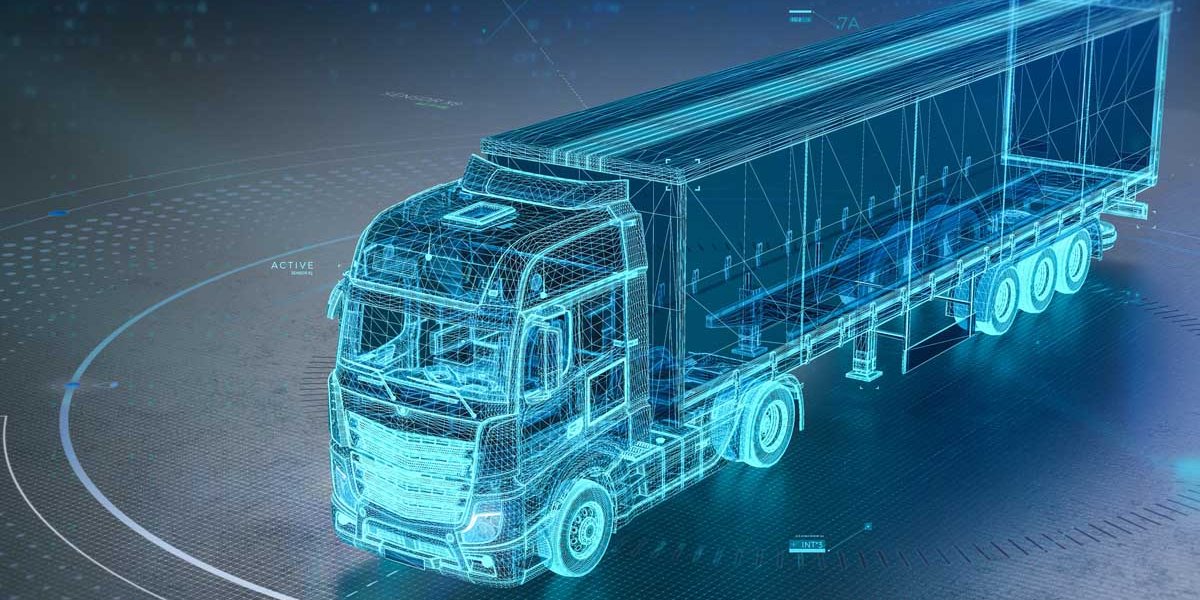Eight ways to improve your productivity with delivery route planning software

Modern Delivery Challenges
Transport and logistics companies that deliver goods, either to a consumer’s home or a business location are facing many new challenges as they try to make these deliveries. All customers expect their orders and deliveries to be handled efficiently and on time, often within tight time windows. But an increase in sales from online retail coupled with a shortage of drivers and the need to reduce the fleet’s carbon footprint has added to the pressures on fleet operations like never before.
In Order to meet customers' ever-increasing demands, retailers and B2B suppliers need to consider all of their deliveries at any point in time and use automated optimisation of their delivery schedule and routes to ensure timely deliveries and safeguard customer satisfaction.
Do you recognise any of these tell-tale signs that you need an automated delivery route optimisation solution?
1) It takes you all afternoon or longer to plan your next day’s deliveries.
The Solution is a dynamic delivery route optimisation solution that will calculate deliveries for the next day and beyond, automatically with routes and delivery schedules as each order is taken, while continuing to optimise delivery routes right up until you say stop and the vehicles are loaded.
An optimised delivery route schedule only takes a few minutes to achieve.
2) You frequently have vehicles returning early while other vehicles are out late and still delivering.
With delivery route optimisation software loads between vehicles are automatically shared in order to utilise each vehicle to its full potential.
This also means that each delivery route is equal, not necessarily in the number of deliveries but in the overall workload. This creates a feeling of fairness amongst drivers that planners are not favouring certain drivers with shorter routes or fewer deliveries.
3) Your Drivers complain of visiting similar locations in the morning and afternoon.
A delivery route optimisation and scheduling tool will group deliveries so they can be delivered at similar times.
A dynamic optimisation tool takes this a stage further by considering orders across a number of days, optimising future deliveries and enabling deliveries to be brought forward where it makes sense for customer. This will result in higher levels of customer satisfaction for those that receive deliveries earlier than expected.

4) You regularly need to hire extra vehicles and drivers to meet your delivery demands or you are turning customers away because you don’t have the delivery capacity.
Having a delivery route optimisation solution that considers your deliveries dynamically against the vehicles in your fleet over several days and does not just schedule orders for the next day in batches.
This means that you will only offer deliveries if there is capacity in your fleet available to do it. Customers are only presented with delivery options that the system knows can be met This eliminates dissatisfaction from customers whose delivery date must be delayed when you realise you don’t have the capacity to do it.
5) If you can’t easily provide your customers with an ETA and then meet that scheduled delivery window.
Using Artificial Intelligence (AI) software for delivery route optimisation that utilises the latest traffic data and maps means that your delivery ETA’s will be accurate and achievable within a half-hour to 1 hour window. Resulting in satisfied customers when their deliveries turn up at the expected time.
6) Goods are frequently returned due to the customer not being present to receive the goods.
a. If accurate delivery windows can’t be provided and customers are told that their goods will be delivered sometime in the next few days, it will often result in them not being present for the delivery. However, if an accurate ETA is provided customers will either know to wait in or request another more suitable time for a delivery, resulting in a higher percentage of deliveries that are successful on the first attempt.
b. Offering customers the ability to select their own delivery slots will result in a more efficient operation. Not all customers want their goods delivered the next day and price incentives can be applied to get the customer to select a delivery slot when another delivery is in their area. A dynamic delivery routing solution will consider orders already taken, and in the system, when optimising routes and offering potential delivery windows for new incoming orders at the point of sale.
7) If you believe your delivery costs are rising faster than inflation.
If your delivery routes are not optimised then your vehicles could be travelling further than necessary, costing you more in fuel and maintenance.
Optimised delivery schedules will result in a lower cost per delivery and in less wear and tear on vehicles, saving fuel and maintenance costs. With the drive to net zero it will also reduce CO2 emissions by eliminating wasted miles.
8) You keep receiving calls from customers asking where their delivery is and why it is late.
a. Combining a dynamic delivery route optimisation solution with automated customer delivery notifications will improve customer knowledge of their deliveries and reduce your workload. If a customer knows their delivery has left the yard and can track a vehicle’s location as it approaches their delivery point, they are less likely to be contacting you and checking on their delivery and they are likely to be present for the delivery.
b. Simply being able to offer a narrow delivery time and having the knowledge that it is achievable means that over time your customers will also become accustomed to receiving their deliveries when you say they will receive them, resulting in a higher confidence rate in your deliveries and an improved level of customer satisfaction.

Meeting delivery challenges with delivery route optimisation
Many of the delivery challenges that companies experience today are all `related to each other.
If delivery route optimisation is implemented to increase capacity and productivity, you will, in all probability, also see other positive effects on the business, such as increased customer satisfaction and reduced fuel consumption.
The 3 main benefits of introducing automated delivery route optimisation software.
- Increasing productivity
- Improving the customer experience
- Reducing fuel consumption
1. Increasing delivery productivity
The basis for an efficient and profitable delivery operation is high productivity, and with the help of technology, it is possible to increase delivery capacity by 35%.
With the help of a smart solution for delivery route optimisation, not only does it reduce the time taken to create routes, but also the need for manual intervention and management, leaving planners time to handle the exceptions or complicated deliveries. The time freed up can then be utilised in other ways by the business.
We also know that delivery route optimisation increases a driver's productivity as the mileage per delivery is shortened and the delivery density increased. The workload is also improved and evened out amongst the drivers/vehicles so that better utilisation of assets is achieved.
Delivery Optimisation Case Study
2. Improving customer experience, satisfaction and loyalty
Perhaps the most important aspect for delivery, logistics and transport companies is making sure their customer’s experience is a good one, creating a high level of satisfaction in the delivery process and safeguarding their customer’s loyalty for the continued success of the business.
It includes everything from how the order process is experienced to when and how the actual delivery takes place. The customer's expectations are often that an order will be delivered at a time convenient for them, within a narrow time window and at a price they are prepared to pay.
Delivery route optimisation can contribute to customer satisfaction in a positive way. When deliveries need to be planned at short notice, i.e. when the customer places an order and wishes to receive it on the same day or the next day after the order is placed. Delivery route optimisation can be used to quickly and easily select the best vehicle, route and sequence of deliveries to fulfil the order, significantly shortening the process time from order to delivery.
3. Reducing fleet fuel consumption
A third challenge that can be solved with the help of delivery route optimisation is to reduce fuel consumption. Vital with the fuel prices we are currently seeing.
The two main reasons for wanting to reduce fuel usage are because of the big impact on costs and it is an important part of reducing a company’s carbon footprint.
Fuel savings can be achieved through several different initiatives, such as the shortening of driving distances with optimised routes and delivery schedules, and by ensuring that the load is as optimised for the number of deliveries as possible. Even if each route can only be shortened by one mile and one additional delivery is added to each load, over the number of vehicles in the fleet and days of the year this can lead to a massive saving per annum.
Through delivery route optimisation, there is the opportunity to take control of these factors, reducing the mileage and improving the delivery capacity to achieve a 5-10 per cent saving in fuel consumption and increased productivity of 35%.
Many of Descartes’ customers today use delivery route optimisation to efficiently process orders from their customers, gain a better view of their available resources, view any operating restrictions that exist and efficiently produce the combination of optimised routes and stops that best achieves their objectives. Whether their goal was to meet customers' delivery requirements, minimise cost per delivery, reduce their carbon footprint, or increase profitability, delivery route optimisation was an important step for them.
With many delivery issues and more demanding customers, the challenges are numerous, but the opportunities for business improvement are significant.
Contact us to discover how delivery route optimisation software can improve your fleet’s efficiency, increase delivery density and improve customer satisfaction.

